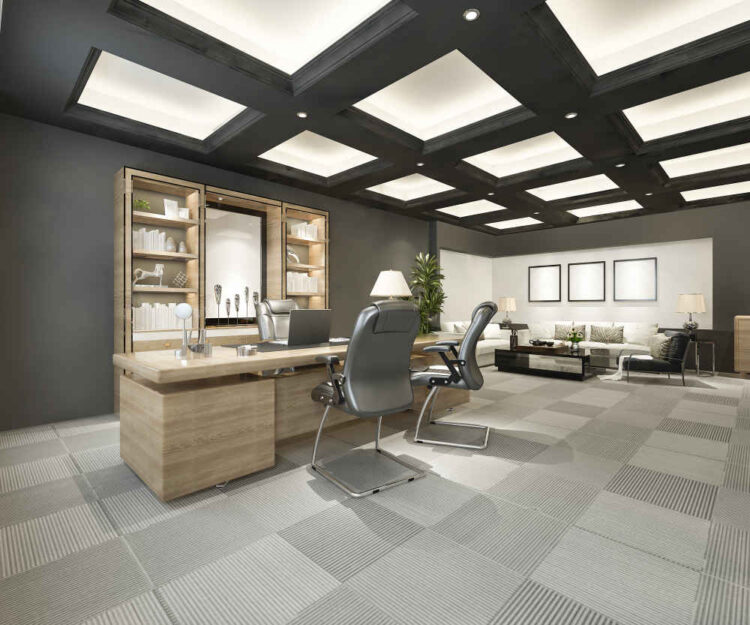In an increasingly competitive business landscape, the importance of an engaging, highly functional office space cannot be overstated. Companies are recognizing that employees are the backbone of their success and are paying more attention to creating environments that foster productivity, creativity, and wellbeing. Enter the realm of commercial office fitouts, a specialised sector dedicated to transforming workspaces into areas that reflect corporate identity and ethos while enhancing employee satisfaction.
Understanding Commercial Office Fitouts
Commercial office fitouts involve more than just a few cosmetic changes. They are comprehensive projects encompassing design, construction, and furnishing of interior spaces to meet the specific needs of a business. A successful fitout optimises the use of space, incorporates the latest technology, and reflects the company’s brand. These changes are crucial for businesses looking to evolve and adapt to modern work practices.
The Strategic Approach to Office Renovations
Redefining a workspace typically requires a strategic approach. It begins with meticulous planning and understanding the needs of the employees and the business itself. Whether it is upgrading existing facilities or moving to a new location, the essence of a successful commercial office fitout lies in creating a space that enhances workflow and maximises efficiency.
Analyzing the Benefits of a Well-Designed Office
The benefits of well-designed office spaces are multi-fold. Firstly, they can significantly improve employees’ morale and productivity by providing comfortable workstations and communal areas that encourage collaboration. Secondly, they can reduce operational costs through energy-efficient designs and smart space utilisation. Finally, a modern and professional workspace can leave a lasting impression on clients and partners, reinforcing the company’s brand and reputation.
Elements of Commercial Office Fitouts
A typical commercial office fitout includes several elements, each playing a crucial role in the overall outcome. Design aesthetics, such as colour schemes and lighting, are critical in setting the right mood and tone. Functional spaces like meeting rooms, break areas, and private offices need to be planned to support various activities seamlessly. Lastly, ergonomic furniture and adaptable workstations are essential components that contribute to employee wellbeing and adaptability to individual needs.
Incorporating Technology in Modern Workspaces
Modern office fitouts also integrate technology to support contemporary work practices. This includes implementing high-speed internet infrastructure, wireless charging stations, and interactive presentation systems. Prioritising technology within the design phase ensures that the workspace is future-proofed and ready to adapt to evolving business demands.
Understanding Cost and Time Implications
The cost and time involved in office renovations can be substantial, and it’s imperative for businesses to have a clear understanding from the outset. A detailed budget should factor in all aspects of the fitout, including design, construction, and furnishings, and allow for contingencies. Similarly, a realistic timeline that minimises disruption to business operations is crucial for a smooth transition into the new space.
Partnering with Experts
Realising the vision of a new workspace is not a task to be undertaken lightly. Partnering with experts in the field of commercial office fitouts can provide invaluable insights and expertise. Professional fitout companies bring a wealth of experience and can manage the project from concept to completion, ensuring that the end result aligns with the client’s objectives and budget constraints.
The Role of Sustainability
As environmental concerns continue to gain prominence, sustainability has become a key consideration in office fitouts. Sustainable designs focus on energy efficiency, the use of eco-friendly materials, and creating healthy environments that improve air quality and natural light. Such approaches not only reduce the ecological footprint but can also lead to cost savings in the long term through reduced utility bills and maintenance costs.
Catering to an Evolving Workforce
The nature of work and the workforce is in constant flux. As such, office fitouts must be designed with flexibility and adaptability in mind. Spaces should cater to a variety of work styles and should be able to evolve as the needs of the business change. This could mean designing areas that can serve multiple purposes or selecting furniture that can be easily reconfigured.
Conclusion: Future-Proofing the Workplace
The art of commercial office fitouts is an ongoing process of evolution and innovation. By creating spaces that are both functional and inspiring, businesses can ensure they are well-placed to attract and retain the best talent while also laying a foundation for future success. While the investment in time and resources may be significant, the long-term benefits of a thoughtfully designed office fitout are well worth the effort.
Embracing the Transformation
As the business world continues to change at a rapid pace, the need for adaptable, efficient, and attractive workspaces will only become more pronounced. Companies looking to stay ahead of the curve should embrace the transformation with a well-executed commercial office fitout, considering it an investment in their most valuable asset: their employees.
Creating a Lasting Impact
Ultimately, the goal of a commercial office fitout is to create an environment that resonates with employees, clients, and stakeholders alike. It’s about crafting a space that not only meets today’s needs but also anticipates the demands of tomorrow. With careful planning, expert guidance, and a focus on innovative design, the transformation of workspaces through commercial fitouts becomes an art that shapes the future of work.











